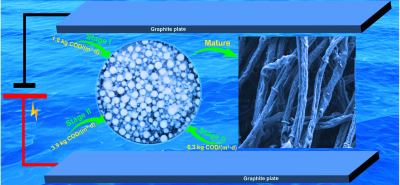
Response of aerobic granular sludge to organic loading rate under micro-electric stimulation environment
How did your country report this? Share your view in the comments.
Diverging Reports Breakdown
Response of aerobic granular sludge to organic loading rate under micro-electric stimulation environment
Researchers from Lanzhou University of Technology have conducted a study entitled “Response of aerobic granular sludge to organic loading rate under micro-electric stimulation environment” This study was published in Frontiers of Environmental Science & Engineering, Volume 19, Issue 5. The dynamic OLR affected the behaviors of AGS and reactor performance. The evolution of the microbial population induced the change in bacterial community functions.
Aerobic granular sludge (AGS) is a neoteric wastewater treatment technology. The organic loading rate (OLR) exhibits a critical effect on the AGS formation process. The special role of OLR on AGS is rarely established, especially in a complicated environment. This work explored the influence of OLR on the AGS system under a micro-electric stimulation environment. The dynamic OLR affected the behaviors of AGS and reactor performance. AGS cultured under a dynamic OLR environment showed a more compact structure and the AGS system displayed an excellent capacity in removing pollutants. The stable texture of AGS is related to the extracellular polymeric substance (EPS). The main constitutions of EPS include tryptophan protein, tyrosine protein, humic acid-like substance, and fulvic acid-like substance. The OLR-varied environment may provide a selective condition, impacting the microbial population. The prevail bacteria were Allorhizobium-Neorhizobium-Pararhizobium-Rhizobium (21.98%), Lactococcus (23.93%), and Chryseobacterium (5.58%) in OLR-varied AGS system. The evolution of the microbial population induced the change in bacterial community functions, such as carbohydrate metabolism, replication and repair, and membrane transport functions. This work provides valuable insights into the OLR on AGS processes, helping to the stability of AGS-based systems.
